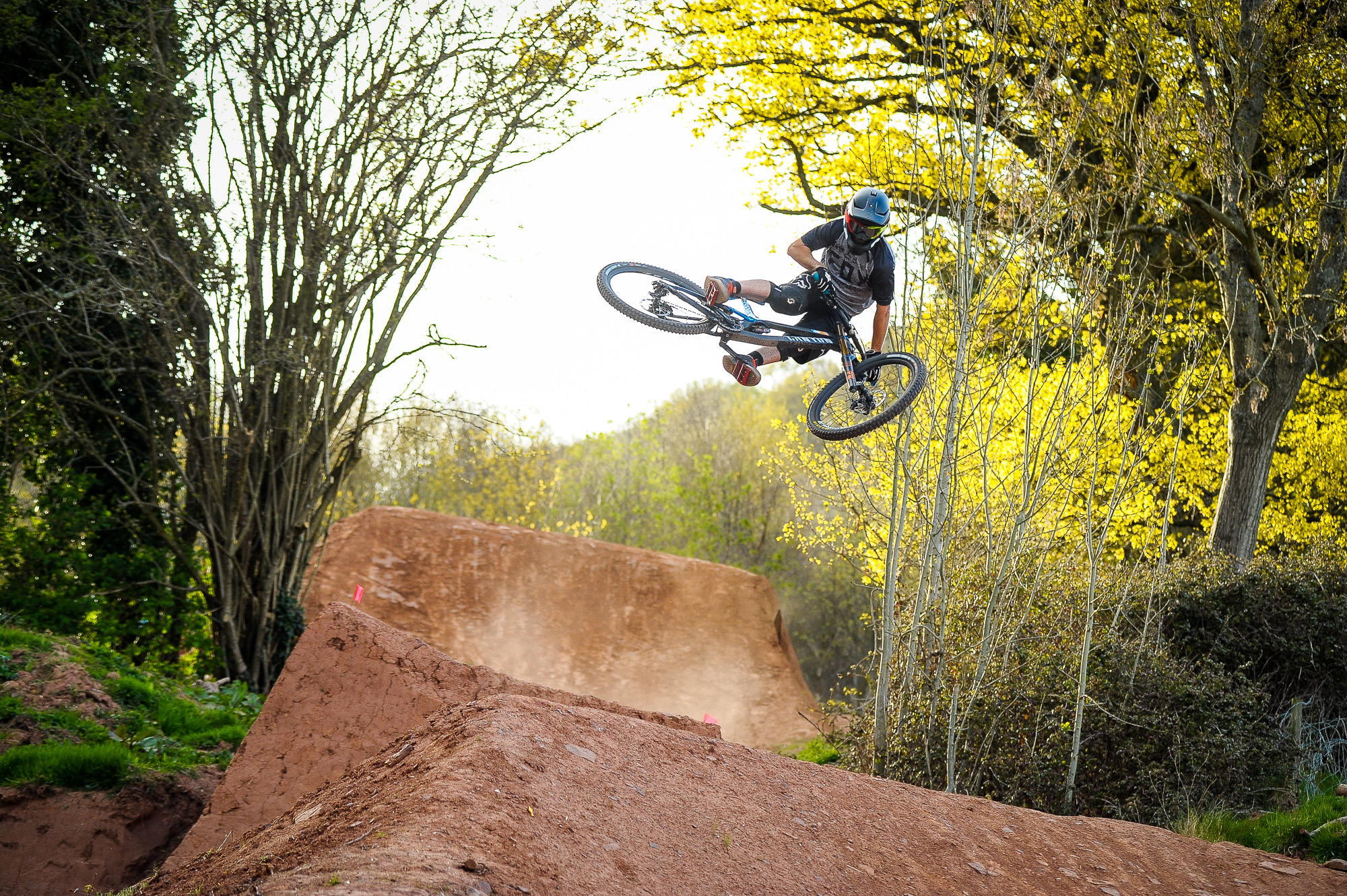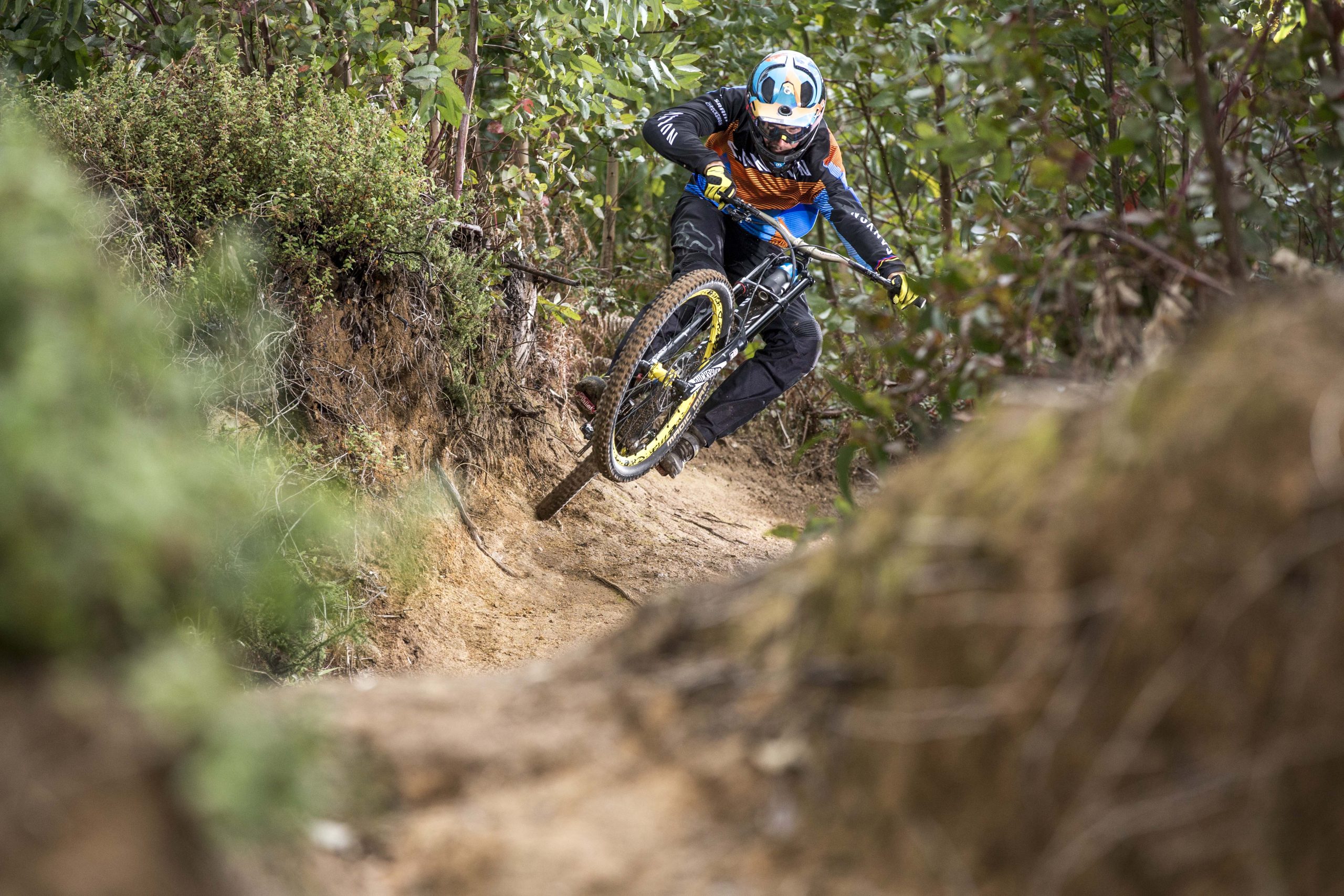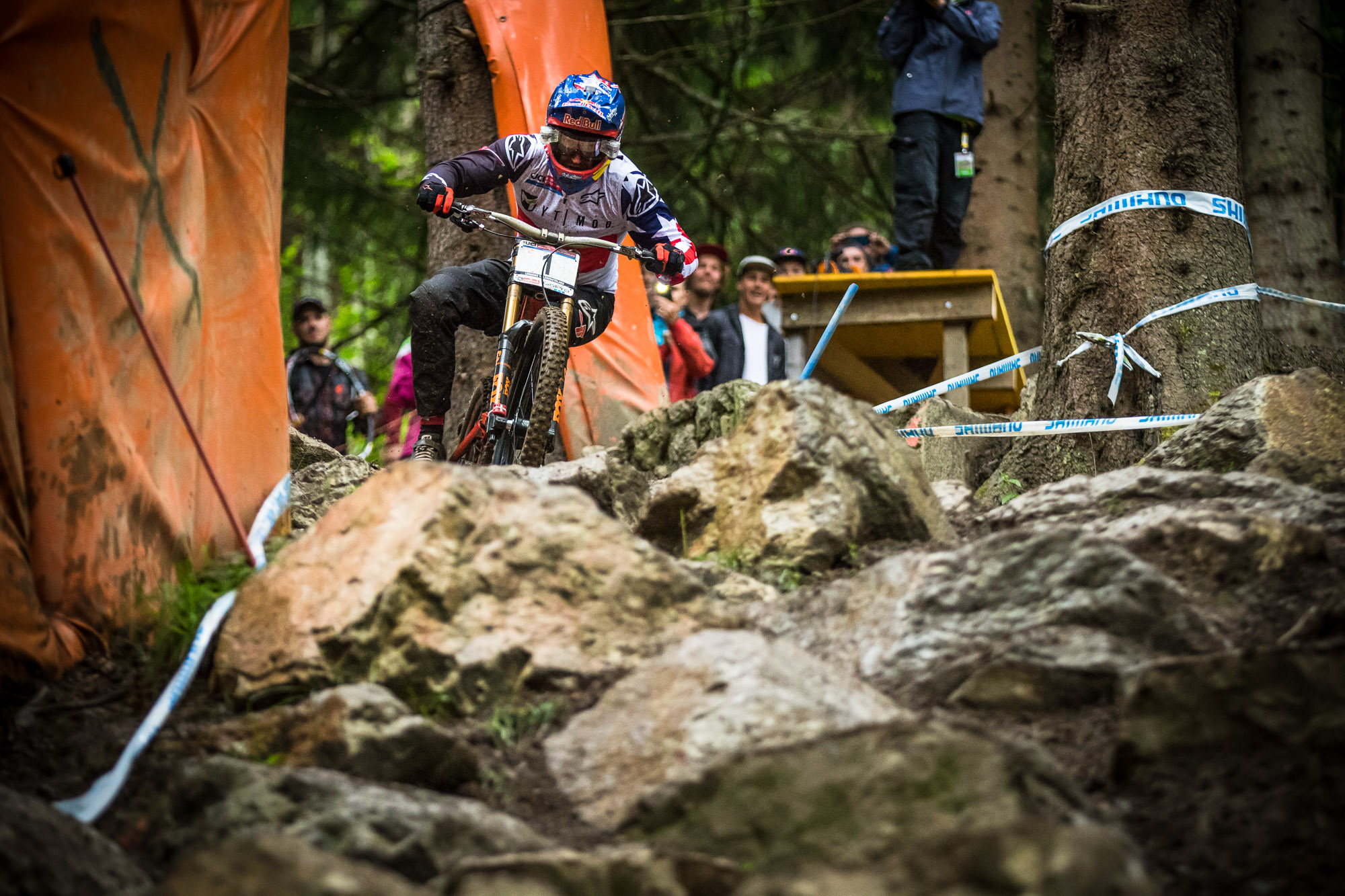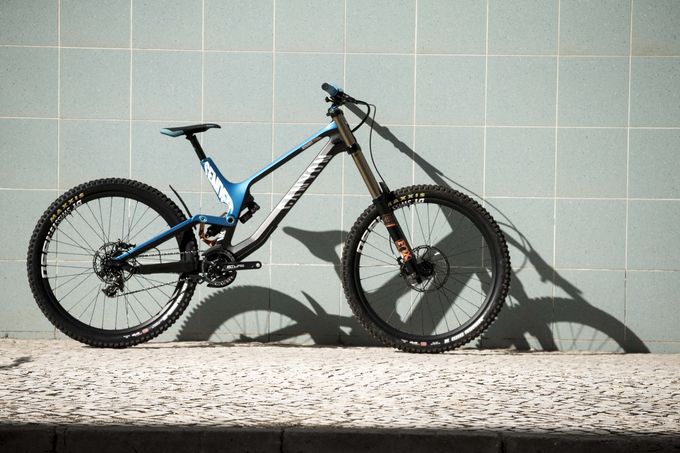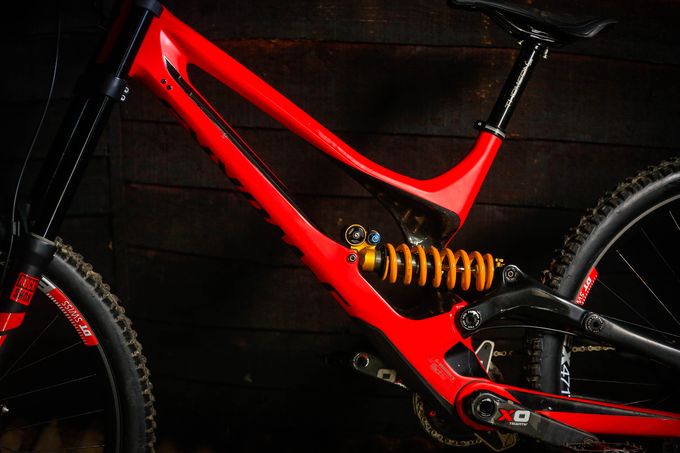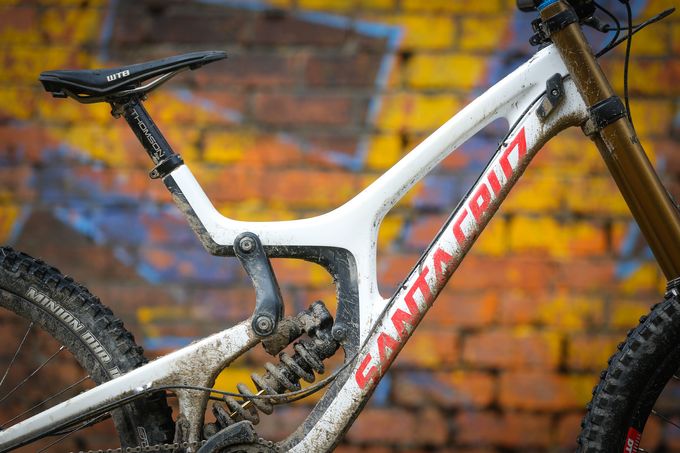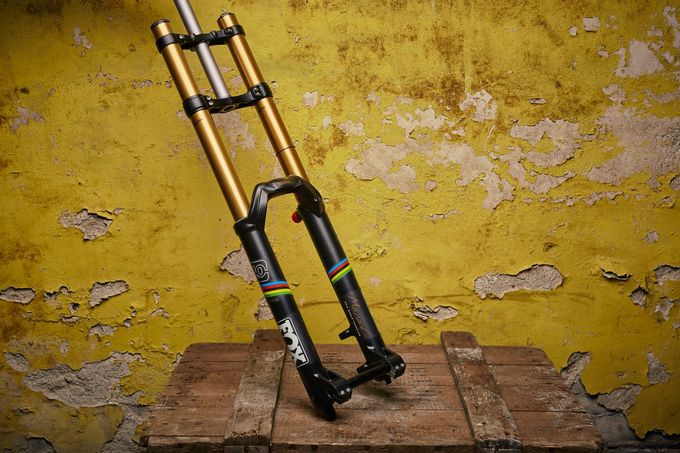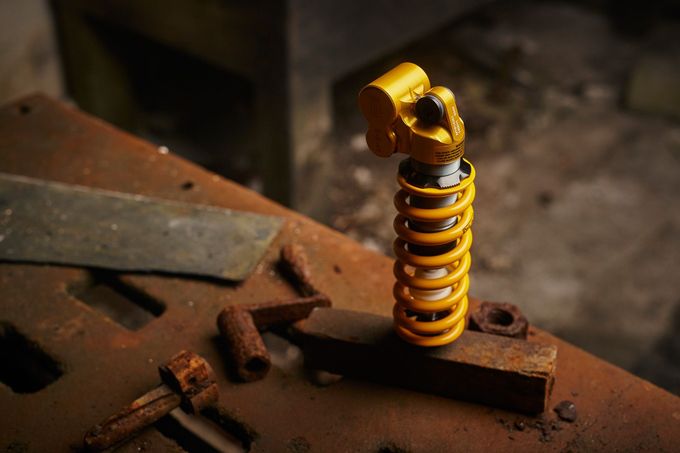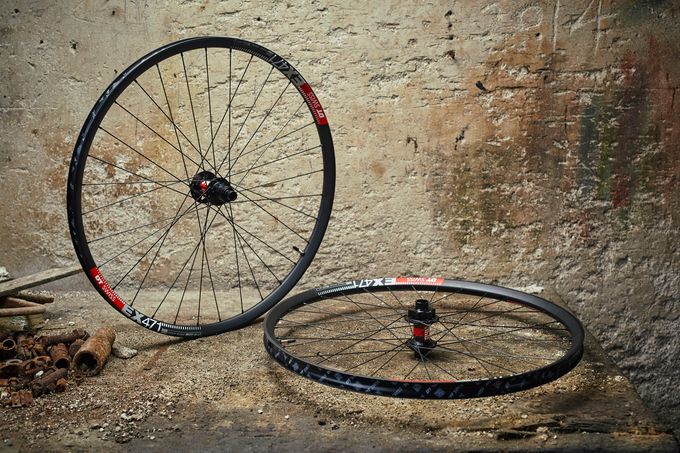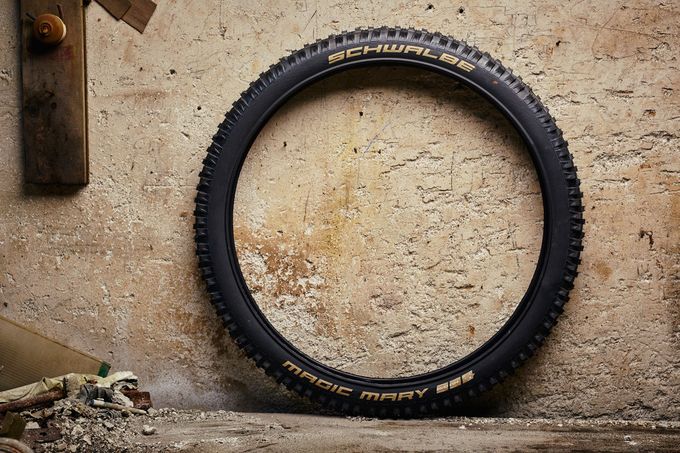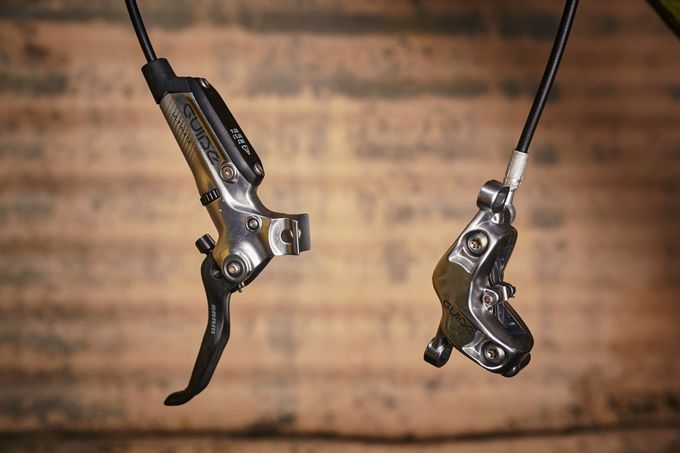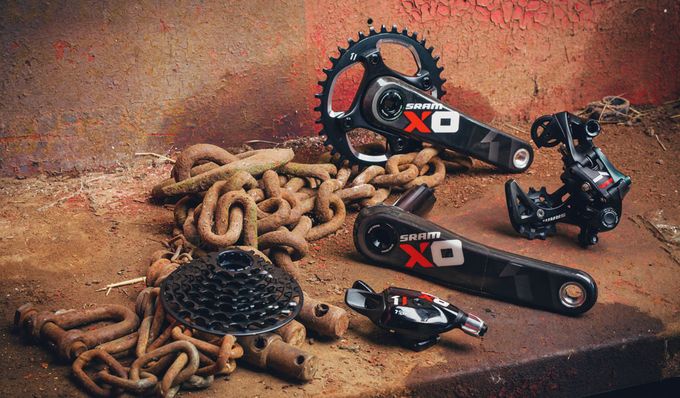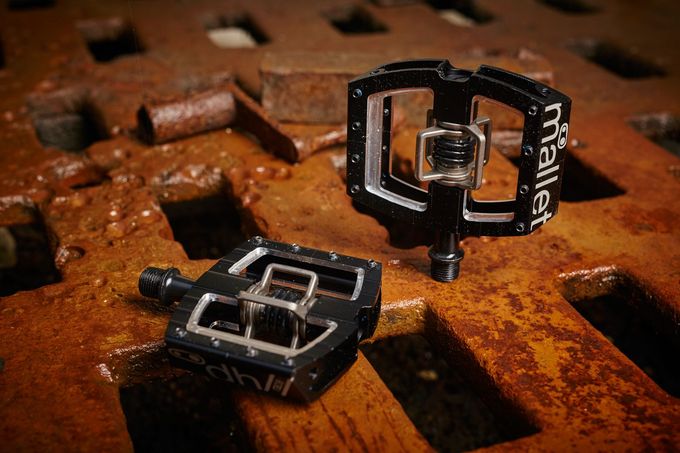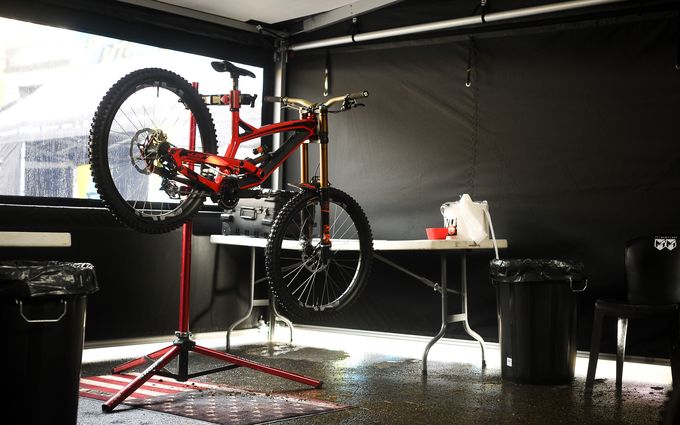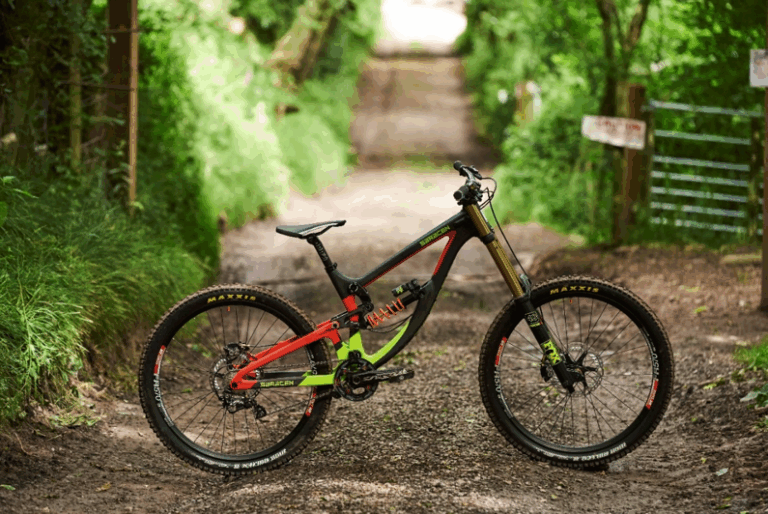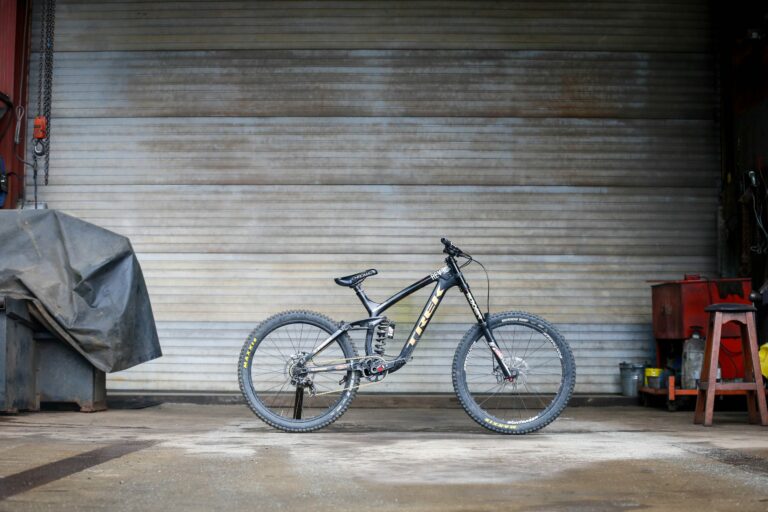downhill bikes – the essentials
If you’ve tuned into the World Cup races or seen the viral videos of riders throwing themselves off cliffs and want a piece of that action, then you’ve come to the right place.
Here is our guide to all the basics of your very first downhill mountain bike from where to buy one, to the parts you should look out for and whether you need one at all.
What is a downhill bike?

The various categories used to define mountain bikes can be a minefield of marketing nonsense and confused customers, with one exception – the downhill bike. Instantly recognisable, brimming with technology and practically useless for 80 per cent of riders, downhill bikes are perfectly formed to attack the most aggressive, steep and fast trails that can be thrown at them.
They are equipped with up to 200mm of the plushest suspension, the sharpest brakes and components capable of taking the biggest hits – quite simply, there’s no better tool if you want to get down a hill faster than your mates. Watching it all come together in the hands of a capable rider is mesmerising and the speed of the professional World Cup racers defies belief. In many ways, downhill is the purest form of mountain biking – harking back to the hippies in the Californian hills that founded the sport in the seventies.
They’re not just for racing though, riding a downhill bike can also be a lot of fun. In many places such as Whistler, Canada or the Alps, people ride them on rowdy trails with big jumps where an enduro bike would leave your body battered after just a few runs. In fact, a lot of brands such as Commencal, Orange, and Transition build bike that are designed to last, as well as go fast, to appeal to this market (but are still good enough to race if you fancy it).
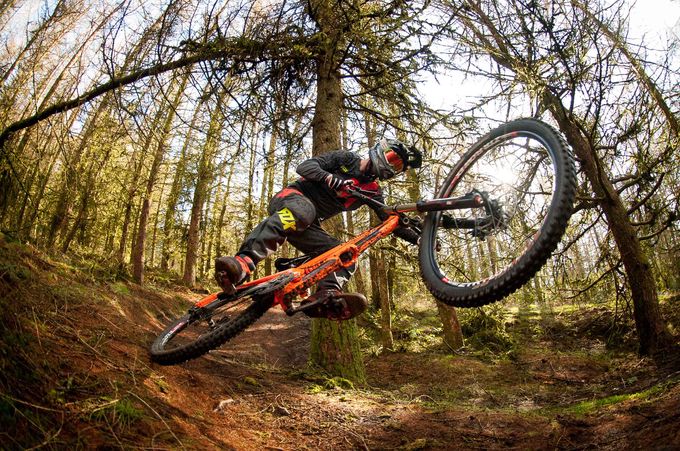
The only problem is, downhill bikes are useless at pretty much anything else. Up to 200mm of suspension and relaxed geometries make them a horror to pedal for extended periods of time. Taking one to your local trail centre would be a bit like driving a Formula One car through London at rush hour, so if you want to get to the top of a mountain you’re better off pushing or getting a lift.

